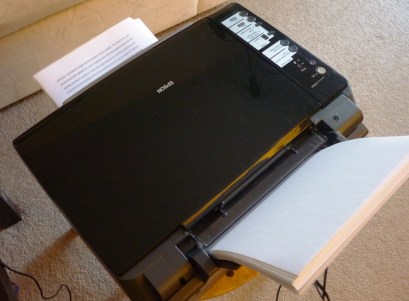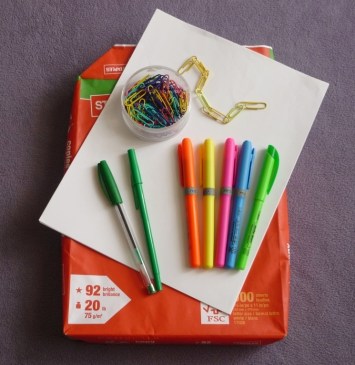In March, I completed the second draft of my historical fiction WIP.
I’ve done shit all writing-wise since.
Okay, that’s not entirely true. I’ve been hard at work forming a writers’ critique group, which I’ll discuss in a future post.
I’ve been researching Ancient Greece, where my next novel will be set. My bookshelf is fairly groaning under the weight of reference books I’ve picked up for cheap from Amazon’s third party sellers.
I’ve also been reading to learn more about how to revise. In some cases, this has involved a return to the first principles of writing craft. I’ll discuss this in a future blog post as well.
All that being said, although I haven’t been completely idle (I don’t think I’m humanly capable of this), my WIP has been on ice for months.
By design I did this, to give myself what I believe is a well-deserved writing break. I also wanted to gain some distance from my work as I prepare to go through the revision process yet again.
To get the most out this, I need certain tools to assist me through each stage of my revision plan.
I’ve always had a fondness for office supplies, which revision allows me to indulge to a greater extent than I do at my actual day job office. Rest assured, every single one of these items is essential to the process of making my writing not shitty:
Printer

This round of revisions will once again beginning with a read-through of the entire novel. To do this, I prefer a hard copy. I like the tactile sensation of turning pages and making line edits and marginal notes by hand.
I’ve had an old Epson inkjet since 2008. A roommate and I brought it used from the trunk of someone’s car at a train station out in Vancouver’s suburbs. Technically the printer belonged to my roommate, but when she moved home to Australia in 2013, I kept it, mainly because I didn’t know (and was too lazy to figure out) how to dispose of it.
Fast-forward to the end of 2015 when I completed my first draft and decided to print the whole thing out. “I need a printer,” I told myself after costing out some $40 to go to the UPS store.
And then a moment later realized: “I have a printer!”
Printer ink
Professional printing isn’t the only thing that’s expensive; so too are manufacturer-made ink cartridges, costing anywhere from $40-$60 or more apiece.
Fortunately, I’ve found a place that sells third-party compatible cartridges that work with my printer. These babies only cost $2.99 each, and it takes only one and a little bit to print a 120,000-word manuscript.
Admittedly, the print quality isn’t fantastic. This could, however, be my printer itself, which I did buy out of someone’s trunk.
Regardless, the budget ink produces a readable revision copy that’s definitely good enough for getting marked up.
Paper
There are so many different types of printer paper: laser paper, copy paper, multiuse paper, paper made from sugar cane fibers. Honestly, I go with whatever’s recycled and the cheapest.
Three-hole punch
To do with as the name implies. I borrowed this from work.
Binder
I prefer the Hilroy 1.5-inch presentation binder, which is flexible and thus squeezes easily onto a crowded bookshelf or in an overstuffed backpack.
These binders come in five different colours (green, teal, hot pink, purple, and clear), and it was a serious decision as to which colour I would choose for this draft (for the previous draft, I used green). Ultimately, I settled upon teal, for reasons I’ll get into in a moment.
Scrapbook paper

Because the binder is a presentation binder, it has a clear pocket on the front where you can put a cover.
For my first draft, I used the page of weird symbols my printer spit out when I tried to operate it using the wrong print driver. This time, I’ll use a pretty piece of scrapbook paper. (As I said, all these items are essential.)
Nail polish
On the subject of essential items….
I chose the teal binder on account of a stunning colour of nail glitter a friend gave me last year upon discovering that I like to commemorate writing milestones with nail polish.
I do this because it helps with the switch between different mental states with regards to writing, like an actor getting into character by putting on the costume.
I’ll paint my nails as soon as I finish my read-through and am ready to start fixing once again – once I need to switch from a reader who notices the problems with the story to a writer who will figure out how to fix them.
But since nail glitter is hell to try to get off your nails, I may paint every other finger with a straight teal polish I already owned.
Green pens
I’ll be using this to make my line edits and marginal notes on the printed manuscript. Green is the only colour I do revision work in because the colour keep me calm and focused, even when there’s a lot of it on the page.
I never do revisions in red, which seems too angry and thus causes me stress.
Multi-coloured highlighters

I use these to call out specific problems I find in the story (e.g. historical facts I need to reconfirm, turns of phrase that sound too modern, names that need changing). Each flaw gets its own colour.
I don’t actually expect I’ll need all five of them (I only used two in the first draft), but the multipack is pretty and I’m sure I’ll use all the colours eventually.
Coloured paper clips
This is the bread and butter of my revision plan – the tool that I genuinely consider the secret to my success in having managed to produce this current draft.
After I finish reading and marking up a chapter, I will fasten its pages with either a green, yellow, or red paperclip based on its revision needs. In this way, I’ll break the intimidating whole into smaller, more manageable parts.
Also shown: a chain of yellow paper clips. I hunted these down at work, fearing I’ll run out since I expect I’ll use this particular colour the most
Die-cut sticky notes
 Another staple of my revision plan. Each chapter in the novel will get a numbered sticky note, which I’ll hang in ordered rows on my wall. As I finish revising a chapter, I’ll move its corresponding sticky note from down low on the wall to a higher position to signify a small success.
Another staple of my revision plan. Each chapter in the novel will get a numbered sticky note, which I’ll hang in ordered rows on my wall. As I finish revising a chapter, I’ll move its corresponding sticky note from down low on the wall to a higher position to signify a small success.
For the first draft, as shown, I used brightly-coloured square sticky notes. This time, I’m going fancy.
Poster board
The wall I stick my chapter sticky notes on is a narrow passageway leading to my bedroom that’s a dark and awkward space for taking pictures.
I bought the poster board to tack to my wall, and will hang the sticky notes on it instead. This is solely so I can take the board down and move it as necessary to photograph and post my progress. Because that’s how vain I truly am.
Candles
I love to have a candle burning while I work; they make the writing process feel magical, like I’m conjuring some long-forgotten spell. Plus these candles are blue so they match the colour scheme of this draft.
Laptop
This is where the real magic happens.
Do you love office supplies as much as I do? Do you have special tools you use for revision or any other major projects in your life? Let me know in the comments.
(Images: J.G. Noelle)


To each writer her own. I bought every colored office supply on the planet – they sit in the drawer, unused.
With my limited brain, there is ONE version, the current one, and all the mess is stored in the many files which corral the content for me BEFORE I start writing.
Sometimes I’m wistful for colored tabs. Have lots of fun!
LikeLike
Too bad I don’t live near to you. I’d come take your unused stock off your hands.
I do a lot of messy pre-writing as well, which I think has made the overall story of these early drafts cleaner than it could have been. However, I never met a sentence I wanted to see end, it would seem, so there’s still that matter to contend with (among a few others).
LikeLike
If my assistant weren’t so happy taking all that stuff for her nieces and nephews, your might get a box.
I had such plans! I colored exactly one side of one fish. Lovely fish. So many more pixels to illuminate.
When we stop watching Netflix shows with subtitles (would it kill them to spend a few bucks on dubbing?), the embroidery I bought at the British Museum over a dozen years ago will come out, and get a few more cross-stiches. It’s lovely – way too many pixels.
Hate it when you really have to kill one sentence, add a period, and begin the next piece with a conjunction. Each piece parses separately, but I am NOT James Joyce.
LikeLike